When you invest in a recreational vehicle (RV), you are not just purchasing a mode of transportation, but a home on wheels. Whether you’re hitting the open road for a weekend getaway or embarking on a cross-country adventure, your RV will become your personal sanctuary. As with any large investment, protecting your RV is paramount especially its exterior. The paint on your RV faces constant exposure to harsh elements like UV rays, dirt, bird droppings, tree sap, road salts, and more. This can result in discoloration, fading, and even permanent damage if not taken care of properly.
We’ll explore the best RV paint protection options to help you maintain that shiny, fresh look for years to come. We’ll cover the importance of RV paint protection, various protective solutions, and how to choose the right one for your RV. Plus, we’ve included answers to the most frequently asked questions (FAQs) about RV paint protection.
Why RV Paint Protection is Crucial
Your RV’s paint isn’t just for aesthetics it’s a protective barrier for the underlying materials. The finish on the exterior of your RV helps to safeguard the body from UV damage, oxidation, and other environmental threats that can cause long-term harm.
Here are a few reasons why it’s important to invest in proper paint protection for your RV:
- UV Protection: Prolonged exposure to sunlight causes oxidation, which can dull the paint, leading to a faded, tired appearance.
- Protection from Scratches and Chips: RVs are frequently exposed to debris on the road. Rocks, dirt, and even tree branches can cause unsightly scratches and chips.
- Maintenance Ease: A protective coating makes cleaning easier, reducing the frequency and effort involved in keeping your RV looking fresh.
- Increased Resale Value: A well-maintained exterior enhances your RV’s appearance and can increase its resale value.
- Preventing Corrosion: Paint protection prevents water and moisture from getting into the underlying metal parts of your RV, which can lead to rust and corrosion.
The Best RV Paint Protection Methods
Now that we understand why paint protection is necessary, let’s dive into the different options available. There are various methods and products on the market, each with its own benefits. We will break them down to help you decide which solution best suits your needs.
1. Ceramic Coatings
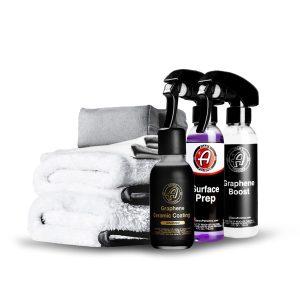
One of the best options for RV paint protection is ceramic coating. Ceramic coatings are liquid polymers that chemically bond with the surface of your RV, creating a durable protective layer. They offer long-lasting protection against UV rays, road grime, bird droppings, tree sap, and other contaminants. In addition, ceramic coatings make cleaning easier by causing water, dirt, and contaminants to bead up and roll off the surface.
Pros of Ceramic Coatings:
- Exceptional UV protection.
- Easy to clean surface.
- Long-lasting (can last up to 2-5 years with proper maintenance).
- Enhances the RV’s appearance with a glossy finish.
Cons of Ceramic Coatings:
- Expensive (though worth it for long-term protection).
- Requires a professional application or careful DIY installation.
- May require periodic maintenance to keep it in top shape.
Popular Products:
- Flight Shield Pro by FlightShield: Known for its effectiveness and durability, this ceramic coating is specifically designed for RVs and other vehicles that need protection from the elements.
- Turtle Wax ICE Seal N Shine: An affordable alternative for those looking for a ceramic-like shine and protection on a budget.
2. Paint Sealants
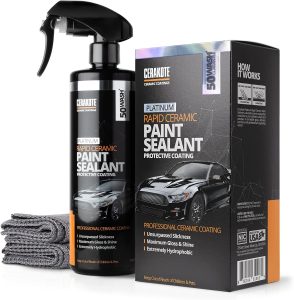
Paint sealants are synthetic products designed to protect the paint on your RV. Unlike traditional wax, which sits on top of the paint, paint sealants bond to the surface, providing a longer-lasting layer of protection. They act as a barrier to environmental contaminants, UV rays, and water, keeping your RV’s exterior shiny and well-maintained.
Pros of Paint Sealants:
- Provides protection for several months.
- Easier to apply than ceramic coatings.
- Affordable compared to ceramic coatings.
- Protects against UV rays, water, and dirt.
Cons of Paint Sealants:
- Needs reapplication every few months.
- Less durable than ceramic coatings.
Popular Products:
- Meguiar’s M6232 Mirror Glaze Paint Sealant: A high-quality synthetic sealant that enhances shine while protecting your RV’s paint.
- 303 Products 303 Touchless Sealant: Easy to apply and highly effective in repelling dirt, water, and contaminants.
3. RV Wax
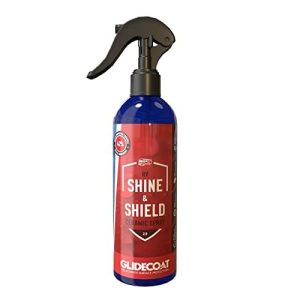
Waxing your RV is a traditional method of protecting its paint. RV-specific wax products are formulated to provide a protective layer that enhances shine and guards against oxidation, water spots, and UV rays. While waxing is a great option for short-term protection, it needs to be reapplied regularly to maintain its effectiveness.
Pros of RV Wax:
- Easy to apply.
- Enhances the paint’s shine and depth.
- Affordable.
- Provides UV protection.
Cons of RV Wax:
- Needs frequent reapplication (every 1-3 months).
- Less durable than sealants or ceramic coatings.
Popular Products:
- Meguiar’s M6332 Marine/RV Pure Wax: A top-rated wax that protects against UV rays and provides a long-lasting shine.
- Turtle Wax Rinse-Free Wash & Wax: Convenient for those who want to wash and wax their RV in one step.
4. Clear Film Protection (Paint Protection Film)
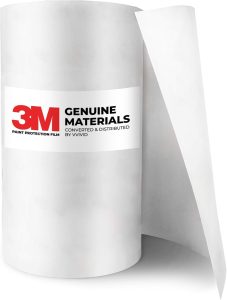
For those who want a more robust form of protection, clear film paint protection is an excellent option. This film is a transparent, adhesive material that is applied directly to the RV’s paint to protect it from chips, scratches, and other physical damage. It’s often used on high-impact areas such as the front cap, bumpers, and side panels.
Pros of Clear Film Protection:
- Highly effective in preventing scratches and chips.
- Invisible once applied.
- Long-lasting.
- Doesn’t require frequent reapplication.
Cons of Clear Film Protection:
- Expensive upfront.
- Can be difficult to apply (DIY installation requires skill and precision).
- May discolor over time if exposed to the sun.
Popular Products:
- XPEL Ultimate Plus Paint Protection Film: This high-performance film offers ultimate protection and is self-healing.
- 3M Scotchgard Paint Protection Film Pro Series: Another trusted name in paint protection, offering superior durability.
How to Apply RV Paint Protection
The process of applying paint protection varies depending on the type of protection you choose. Here’s a general overview of how to apply each type of protection:
- Ceramic Coatings:
- Thoroughly wash and dry the RV.
- Clay bar the surface to remove contaminants.
- Apply the ceramic coating using an applicator pad, working in sections.
- Buff the surface to remove excess coating and achieve a glossy finish.
- Allow the coating to cure for 24-48 hours.
- Paint Sealants:
- Wash and dry the RV.
- Apply the sealant to a microfiber applicator pad and work it into the paint in small sections.
- Let it cure for a few minutes.
- Buff the surface with a clean microfiber towel to achieve a shiny finish.
- RV Wax:
- Wash and dry the RV.
- Apply wax with an applicator pad in small sections.
- Let the wax haze over before buffing it off with a clean microfiber towel.
- Clear Film Protection:
- Clean the area where the film will be applied.
- Use a heat gun and squeegee to apply the film smoothly to the surface.
- Trim any excess film and ensure the edges are sealed properly.
FAQs About RV Paint Protection
- How often should I apply paint protection to my RV?
- If you’re using wax, it should be reapplied every 1-3 months. For paint sealants, reapplication is usually required every 6 months to a year. Ceramic coatings, however, can last 2-5 years with proper maintenance.
- Can I apply paint protection myself, or should I hire a professional?
- Some products, like waxes and paint sealants, are easy to apply on your own. However, ceramic coatings and clear film protection may require professional installation, especially for optimal results.
- How much does RV paint protection cost?
- Waxing is the most affordable option, ranging from $20 to $50 for a bottle. Paint sealants typically cost between $40 to $100. Ceramic coatings and clear film protection can range from $100 to $1000 or more, depending on the product and professional installation.
- Does RV paint protection protect against scratches?
- Paint sealants and ceramic coatings can provide a certain level of scratch resistance, but clear film protection is the best option if you want to protect your RV from chips and scratches.
- Is RV paint protection necessary if I store my RV indoors?
- While indoor storage reduces exposure to UV rays and contaminants, it’s still important to apply paint protection. The protection will maintain the finish, protect from dust, and reduce the effort required to clean your RV.
- Can I use regular car wax on my RV?
- While regular car wax can be used on your RV, it’s better to use products specifically designed for RVs, as they offer enhanced UV protection and are formulated for larger surfaces.
- Does RV paint protection help with water spots?
- Yes, both ceramic coatings and paint sealants help prevent water from adhering to the surface, reducing the occurrence of water spots. Regular cleaning is still necessary to maintain the finish.
Conclusion
Choosing the best RV paint protection is essential to keep your RV looking great and preserve its value. Whether you go with a ceramic coating for long-lasting durability, a paint sealant for affordability, or clear film protection for physical damage, you’ll ensure that your RV stays in top condition for years to come.
By investing in the right protection, you’ll be able to enjoy your adventures without worrying about the wear and tear of the open road.

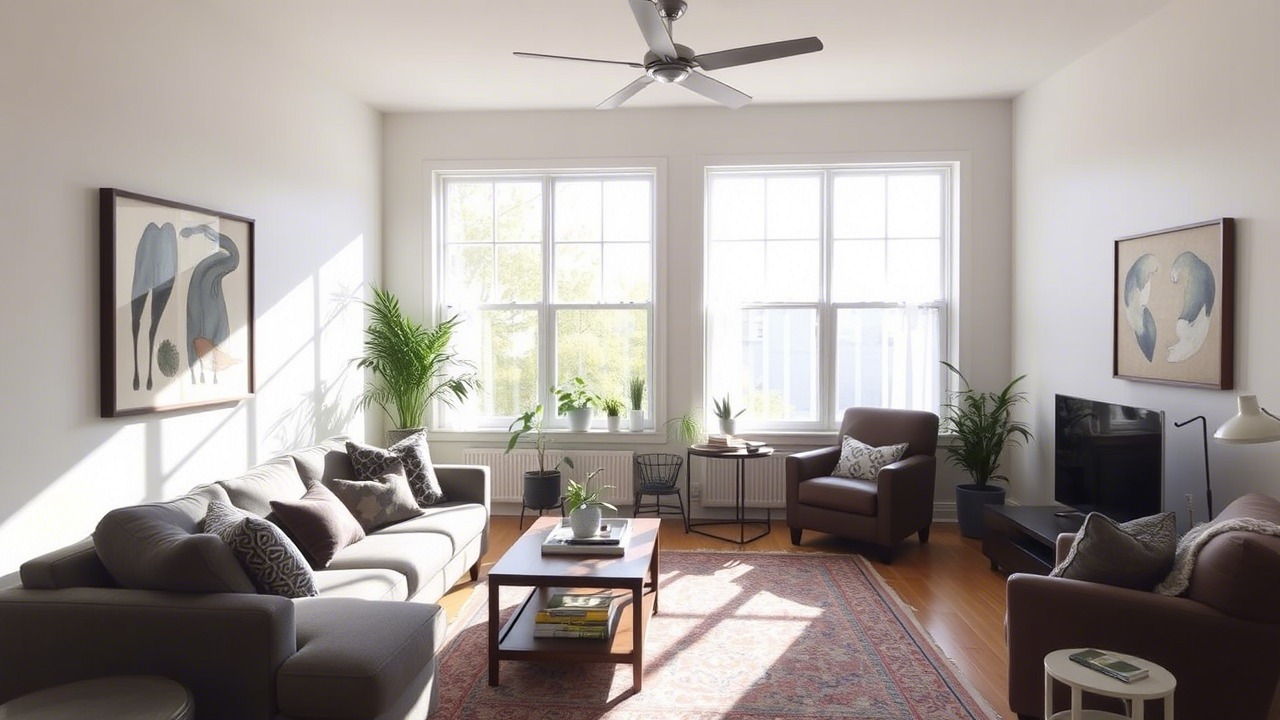
Leave a Reply